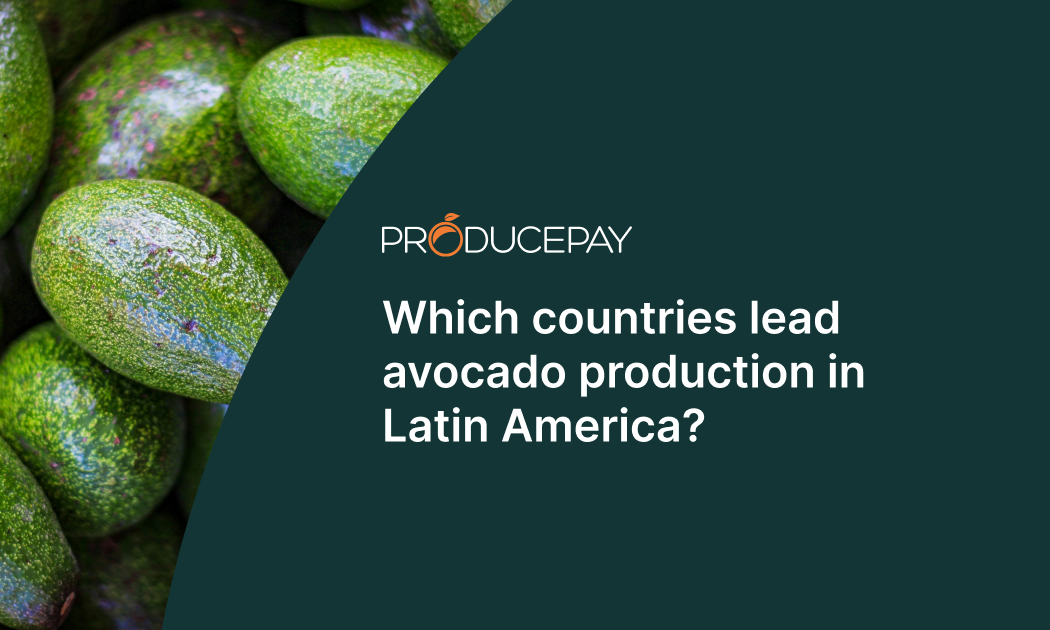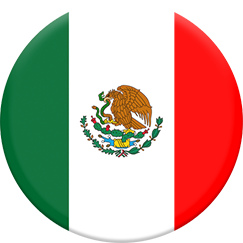
Which countries lead avocado production in Latin America?
(Last update: July 9, 2025)
Avocado cultivation is of great relevance in Latin America. This region is home to the world’s leading avocado producers, a list headed by Mexico, which also leads the global export market.
Thanks to strong demand from high-value markets such as the United States and Europe, avocado production has become a key economic driver for several Latin American countries.
Top avocado producers in Latin America
According to the most recent data from the Food and Agriculture Organization of the United Nations (FAO), Mexico tops the global avocado production. It is followed by Colombia and Peru, which hold the second and third positions globally. Brazil ranks 5th in the region but 7th worldwide.
1. Mexico
Mexico, as the top avocado producer, accounts for 28.5% of the global production. The state of Michoacán is the main avocado cultivation zone, contributing more than 75% of national output.
Mexico is also the largest avocado exporter, sending about 46% of its production abroadIn 2024—mainly to the United States. Mexico exported more than 1 million metric tons of avocados to the U.S., valued at $3.42 billion and representing 87.6% of U.S. avocado imports.
2. Colombia
Colombia has experienced rapid growth in avocado production over the last decade, with Antioquia as its primary producing region. The country surpassed both the Dominican Republic and Peru in 2020 to become the second-largest avocado producer globally.
This growth has also placed Colombia as the 4th largest avocado exporter, with sales exceeding $300 million in 2024—a 54.3% increase from 2023. About 70% of exports went to Europe, but Colombia’s presence in the U.S. market is growing. In 2024, over 36,000 tons of Colombian avocados were shipped to the U.S., setting a 170% year-over-year increase.
3. Dominican Republic
The Dominican Republic stands out not only for its production, but also for its exceptionally high yield, being 3rd in the region, which has allowed it to stay ahead of Peru despite having a smaller cultivation area.
The country primarily exports to the U.S., where it is the third largest avocado supplier. In 2024, more than 42k tons of Dominican avocados were shipped to the U.S. market.
4. Peru
La Libertad, Lambayeque, and Lima are the Peruvian regions that contribute the most to the country’s avocado production.
While the country faced climate-related setbacks in 2024, the outlook remains positive. Growers are working to expand Hass avocado cultivation, with the goal of recovering lost ground and reaching 1 million tons of production by 2030.
Peru is the second largest exporter worldwide with 572k tons in 2024, with Europe as its main market.
Other Latin American countries with growing potential
Several Latin American countries are investing in avocado cultivation with an eye toward entering or expanding in global markets:
- Chile: With more than 160k tons produced annually, Chile is the sixth largest producer in the region. Its counter-seasonal advantage makes it a key supplier to the U.S. and Asia during off-peak months.
- Guatemala: Guatemala produces over 50k tons of avocados each year and has doubled its exports since 2018. Its main destinations include the Netherlands, Costa Rica, and the UK. The current focus is on expanding into the U.S. market.
- Ecuador: Ecuador produces around 26,000 tons of avocados annually. Thanks to favorable altitude and climate conditions, the country is rapidly expanding its Hass avocado acreage and strengthening exports to Europe and the United States.
- El Salvador and Panamá stand out as the countries with the highest yields, with 30.1 tons/ha and 28.3 tons/ha, respectively, even when they produce less than 20k tons per year.
Making avocado industry more predictable
In an industry affected by volatile prices, weather risks, and logistical uncertainty, having a predictable revenue stream is essential for long-term success.
ProducePay’s Predictable Commerce Programs are designed to help growers, exporters, and buyers in the avocado supply chain secure transparent pricing, reliable buyers, and on-time payments.
By reducing risk and improving financial predictability, these programs empower growers and exporters to grow with confidence and deliver high-quality, on time products.
Learn more about how ProducePay is bringing stability and transparency to the produce supply chain.
Sources: FAO-FAOSTAT, Agraria.Pe, Portal Frutícola, Avobook.

